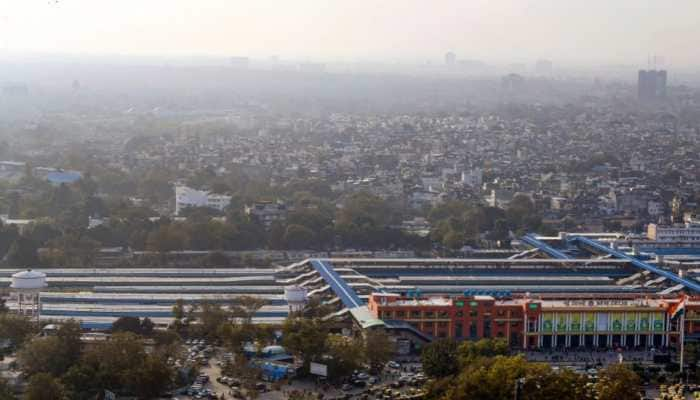India's Chandrayaan-1 helps scientists create first global map of water on Moon
Scientists used a new calibration of data taken from NASA’s Moon Mineralogy Mapper, which flew aboard Chandrayaan-1 spacecraft, to quantify how much water is present on a global scale.
Trending Photos
)
New Delhi: Scientists have created the first map of water trapped in the uppermost layer of the Moon’s soil using data from an instrument aboard India’s Chandrayaan-1 spacecraft.
As per a study says that this may prove useful to future lunar explorers.
Scientists from Brown University in the US used a new calibration of data taken from NASA’s Moon Mineralogy Mapper, which flew aboard Chandrayaan-1 spacecraft, to quantify how much water is present on a global scale.
“The signature of water is present nearly everywhere on the lunar surface, not limited to the polar regions as previously reported,” said Shuai Li, former PhD student at Brown University.
“The amount of water increases toward the poles and does not show significant difference among distinct compositional terrains,” said Li, who is now a postdoctoral researcher at the University of Hawaii.
The water concentration reaches a maximum average of around 500 to 750 parts per million in the higher latitudes and that is less than what is found in the sands of Earth’s driest deserts, say researchers.
“This is a roadmap to where water exists on the surface of the Moon,” said Ralph Milliken, an associate professor at Brown. “Now that we have these quantitative maps showing where the water is and in what amounts, we can start thinking about whether or not it could be worthwhile to extract, either as drinking water for astronauts or to produce fuel,” said Milliken.
The researchers said that the way the water is distributed across the Moon gives clues about its source.
The distribution is largely uniform rather than splotchy, with concentrations gradually decreasing toward the equator.
That pattern is consistent with implantation via solar wind – the constant bombardment of protons from the Sun, which can form hydroxyl and molecular water once emplaced.
Although the bulk of the water mapped in this study could be attributed to solar wind, there were exceptions.
(With Agency inputs)
Stay informed on all the latest news, real-time breaking news updates, and follow all the important headlines in india news and world News on Zee News.
Live Tv







)
)
)
)
)
)
)
)
)
)
